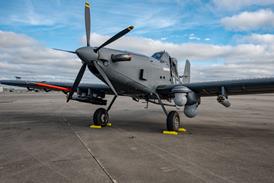Andrzej Jeziorski/MUNICH
A TEAM FROM Collins Commercial Avionics of the USA and Germany's Daimler-Benz Aerospace (DASA) has carried out successfully what is claimed by the companies to be the first fully automatic satellite navigation-based landing.
The trials were part of the Boeing-led GPS Landing System (GLS) programme to validate use of the global-positioning system (GPS) for Category III automatic landings.
The first trials took place on 16-19 July at Glasgow, Montana, using a NASA-owned Boeing 757 as the testbed for the DASA/ Collins prototype GLS equipment. The first triple-channel automatic landing was completed successfully on 19 July.
The GLS system includes a GPS receiver, navigation computer and instrument-landing-system emulation in one line-replaceable unit, with a separate datalink receiver and data recorder. The navigation computer was linked to the aircraft's inertial-reference system.
The unit was combined with DASA's differential GPS (DGPS) ground station, and managed to maintain the high-accuracy differential mode up to 175km (95nm) away from the ground station.
The team plans to undertake a total of between 50 and 75 landings on its system during the programme.
Other teams demonstrating their own GLS systems in the programme are Honeywell/Pelorus Navigation Systems, Interstate Electronics/Airport Systems International and Litton/Wilcox.
Further evaluation following the initial testing is continuing at NASA's airfield at Wallops Island, Virginia.
Source: Flight International























